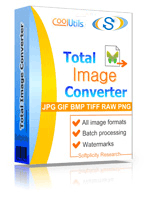1) Upload FPX file to convert
Drop files here, or Click to select
2) Set converting FPX to JPG options
3) Get converted file

 Total Image Converter
Total Image Converter
 JPEG, TIFF, PSD, PNG, etc.
JPEG, TIFF, PSD, PNG, etc. Rotate Images
Rotate Images Resize Images
Resize Images RAW photos
RAW photos Watermarks
Watermarks Clear interface
Clear interface Command line
Command line💾 Upload Your File: Go to the site, click on «Upload File,» and select your FPX file.
✍️ Set Conversion Options: Choose JPG as the output format and adjust any additional options if needed.
Convert and Download: Click 👉«Download Converted File»👈 to get your JPG file.




| File extension | .FPX |
| Category | Image File |
| Description | The FlashPix (FPX) format is a file format used for storing and sharing digital images. It was developed by Kodak and Hewlett-Packard in 1996 as a way to improve the handling and display of large images. One of the key features of the FPX format is its ability to store multiple resolutions of an image within a single file, making it possible for users to view and work with images at different sizes and levels of detail. This feature is particularly useful for digital photography and graphic design. FPX files can also contain metadata, such as information about the image's creator, copyright information, and other details. This makes it possible to keep track of images and ensure that they are used appropriately. Overall, the FPX format is a useful tool for managing and sharing digital images, especially for those working with high-resolution images. However, it is worth noting that the format is not as widely supported as other image formats, so it may not be the best choice for all use cases. |
| Associated programs | Total Image Converter |
| Developed by | |
| MIME type | |
| Useful links | |
| Conversion type | FPX to JPG |
| File extension | .JPG, .JPEG, .JPE, .JFIF, .JFI |
| Category | Image File |
| Description | JPG is the file format for images made by digital cameras and spread throughout the world wide web. Saving in JPG format an image loses its quality, because of the size compression. But at the end you have a much smaller file easy to archive, send, and publish in the web. These are the cases when an image's size matters more than image's quality. Nonetheless, by using professional software you can select the compression degree and so affect the image's quality. |
| Associated programs | |
| Developed by | The JPEG Committee |
| MIME type | |
| Useful links | More detailed information on JPG files |
The transformation from FPX to JPG is akin to a delightful journey through the annals of digital photography, linking the spirited days of photo CD technology with the modern ubiquity of universally accessible image formats. It’s a tale filled with innovation, adaptation, and the timeless charm of capturing moments.
The FPX, or FlashPix, format was birthed during a collaboration between industry giants like Kodak, Microsoft, Hewlett-Packard, and Live Picture. As an image format, its main goal was to optimize the viewing experience for varying resolutions. An FPX file inherently contains multiple resolutions of an image, enabling it to quickly display a low-resolution preview, which could then be enhanced to a higher resolution if needed. This was a pioneering approach during the early days of the internet, aiming to balance image quality with loading speeds.
On the other hand, JPG (or JPEG) has become synonymous with digital imagery. As a format, it's known for its capability to provide excellent compression ratios, making it ideal for both digital photography and web graphics. This lossy compression algorithm ensures that while some data is lost, the human eye often can't discern the difference, making it a gold standard for a multitude of digital image applications.
The transition from FPX to JPG is fascinating for several reasons:
Beyond just the technical transition, this conversion encapsulates the essence of photography's evolution. Photography, at its heart, is about capturing moments, emotions, and stories. Whether through an FPX or a JPG, the soul of the image remains unchanged. However, formats like JPG ensure that these images, these fragments of time, remain accessible to all, irrespective of the device or platform.
In conclusion, the journey from FPX to JPG is more than just a shift in file extensions. It's a reflection of how technology adapts to changing needs while preserving the essence of art and memories. As we convert our cherished FPX files to the more versatile JPG, we're not just updating formats; we're ensuring that the stories they hold, the moments they capture, remain a part of our shared digital legacy.